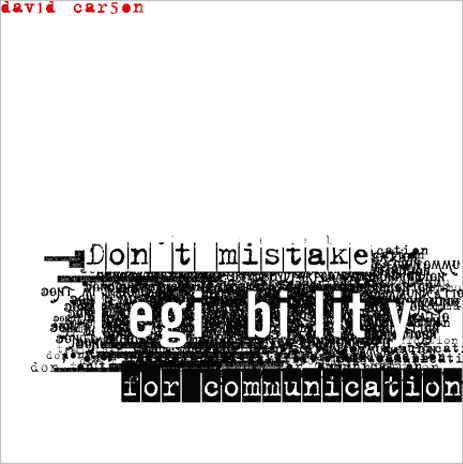During the Russian revolution, art itself, was revolutionised by government and power. Romanticism, which dominated the art world pre-communism, was overthrown by the death of Tsar. Romanticism art was seen as very emotional and embraced emotions such as trepidation and horror; this was a harsh contrast to the motifs of communism. The communist’s idea was of ideology and that everyone was of equal right and power; art therefore mirrored this and became more focused on furthering society. Artists were also regulated as to what they were allowed to create, which in turn created propaganda within the art world.
Cultural forces shifted all signs of poverty and wealth alike,
‘ The Soviets of Workers’, Peasants’, and Soldiers Deputies gained power. The land was given to the peasants, and the factories became property of the workers. Nothing like it had ever been seen.’ (Guerman, 1979, p5)
However, with Communism’s ideological idea that everyone should be equal came the foreseeable lack in freedom of speech. ‘Peace, bread, land’ was one of their slogans. This however wasn’t to be quite as fulfilling as it sounds and this reflected within art. Art began to be regulated and images of factories, geometry and modernity became the subject matter for artists.
Following the death of Lenin in 1924 Stalin rose to power. He banned Romanticism art which was replaced by Socialist Realism. The rules of Romanticism art went against everything Communism was trying to do, fantasising and elaborating gods and figures of power, which created pity and insignificance against the poor. Equality was a key message in Socialist Realism; private art work for the rich was also abolished because Communists thought design should be socially useful.
‘The abiding ground of argument was political, for politics was the historical reality that pressed on painters and critics, as it did on others’. (Brendan Pendeville, 2000, p54)
Socialist Realism often glamourised the roles of the poor with the purpose to further the goals of Communism. Compared to Romanticism, Socialist Realism was a lot more stark with the use of bold colours and prints depicting images of soldiers and peasants. The Soviet Union officially backed Socialist Realism for almost six years. They saw art as a propaganda tool, which in turn is why it was regulated. Everything was dictated from the head of state. Art communists were put in prison or killed in Russia if they did not conform to make Russia look like the ideal place to live. Arts influences upon the developing society were very strong and therefore this is why such great punishments were made to those who did not stand in line.
Artists such as Aleksandr Rodchenko and Liubov Popova were very influential throughout the Revolution. Their style is defined within constructivism and combines autonomous objects with society and precision. Constructivism, founded in 1913 by Vladimir Tatlin, began in Russia, revolveing around the use of materials such as wood, metal and glass, which helped to represent the strong influence of machinery and technology in the movement. This movement directly links to the Russian revolution and modernity as it influenced construction and development within Russia greatly. This style started to become increasingly more popular within the art world as it reflected developments into technology (including strong structures) in a bid to improve society. Some artists believed three dimensional art was to become favoured and conventional painting and sculpture was to almost disappear.
Rodchenko, born 1891 worked mainly using structural abstract lines and also on paper, sculpturally three dimensionally and within advertisement. Rodchenko’s early works fit within Linearism. From 1910-1920 his works were all very precise and structural with the use of rulers and compasses.
‘I painted my linear pictures in 1919, and they were exhibited in 1920... None of the artists recognized them as painting at the time, yet by the end of 1920 and the beginning of 1921 imitators of my art were already appearing on the scene. Many said that line as a framework had opened their eyes to the essence of construction’. (German Karginov, 1979).
Art like this, reflects the ever changing and growing society and the obscure shapes he creates within these images reflects an unknown surrounding and the adaptation people had to undergo with the power change. The preciseness of the lines also influenced society to progress.
With increasing followers of this style and art being used as propaganda tool, art seemingly got reflected back out into society and influenced an uncertainty within the constructivism Russia. Rodchenko’s work went onto become more sculptural and three dimensional. Many of his works were named ‘Construction’ in 1918 and were of abstract ideas and shapes (source 1). These ideas, of course, were a completely different direction to Realism and Romanticism and almost lit the way of the future for society, rather than picturing surroundings and class, commonly depicted in Romanticism and Realism. This new movement of Constructivism focused on generalisation of people and objects and gave no-one separation and distinction between each other. Focus was on economy as a whole, who were seen to have no emotion, feeling or opinion.
Rodchenko went on to advertise. His style focused back into two dimension. One particular poster he created advertising books and reading aiming to convince people to come to book stores (source 2). This was another influence from Communism leaders to try and advance society and expand peoples horizons. The introduction of imagery created emotion and involved the audience more directly. The woman pictured looks to be a standard class, which shows equality. The red ‘books’ lettering is in a shape of a wedge representing the revolution. Alexander Rodchencko thought new forms of art could be a new language creating emotion between the audience and the objects or people within the subject matter.
Working also as an iconic artist throughout the Russian Revolution was Liubov Popova, an avant-garde artist. He worked alongside Rodchenko and independently as well.
‘It includes Popova’s abstract collage patterns for embroidery submitted to the artisan co-operative ‘Verbovka’ ‘her linocut portfolios printed to promote a method of copying’ ‘between 1917 and 1918 she sketched models for proletarian furniture’. (Margarita Tupitsyn, 2009, p13).
Reds and black are two very prominent colours in Popova’s work. Red possibly expressing war and struggle in an emotive sense or also for the use of attention and status within his work. Red and black are both very bold colours and draw the eye within the image. This could reflect the communist attitude to having a tight schedule. Everything had to improve; the way of life, the forward thinking for the future, the order within society and the overall power of the government within a classless society. Block colours, angled lines, bold, no-frills fonts, straight to the point text and construction were all traits that both Popova and Rodchenko’s work owned.
Society had changed, high class royalty living in luxury and poverty and hunger, pain as well as pleasure, were all a thing of the past. Society was now almost emotionless, everybody was equal, no body stood out, nobody could use their special talents and skills for their own benefit. Art closely mirrored this change in society, from the flamboyant Romanticism movement where royals were praised and the poor were disregarded, people could realise dreams and aspirations. Panning to the soul-less Communist art of Socialist Realism and Constructivism. Everything had a purpose and art wasn’t created to be pretty. Order and boundaries had badly affected the ambitious and personality that once belonged to the art and design world. However, Russia in 1925 was the most advanced country in the world. By taking away the voice of the people they focused on development and technology a lot more which created a hypothetical fast forward in the Russian society.
After thirty years of the Communists rule no-one had any design qualities because personality and individuality had been suppressed. The revolution was an opportunity for art to progress but it could be said it stood still or even went backwards in time, in respects to the individuality and innovation within the art world. Communism’s ideas was that art should help construct a new society and it did this, but not for the better.
Source 1
Rodchenko, Hanging Sculpture, 1920
Source 2

Poster by Aleksandr Rodchenko, 1924
Bibliography
(Books sourced from Leeds Central Library)
1). M. Guerman (1979) Art of the October Revolution, Leningrad, Aurora Art Publishers. (709.47)
This extraction shows how Communism changed society greatly and this had a knock on effect in the art world.
2). Brendan Pendeville (2000) Realism in 20th Century Painting, London, Thames & Hudson Ltd. (709.04)
This extraction explains how politics effected everything.
3). James Malpas (1997) Realism, Movements in Modern Art, London, Tate Gallery Publishing Ltd. (709.04)
This extraction helps show and define the differences between art before and during the Communism reign.
4). German Kargino (1979) Rodchenko, London, Thames and Hudson. (759.7)
This extraction shows the society and its adaptation to new trends and ways of working in the art world, conforming to the changing times.
5). Margarita Tupitsyn (2009) Rodchenko and Popova Defining Constructivism, London, Tate Publishing. (709.47)
This extract shows some of the vast amount of work Popova created and not only the quantity but the variation with media and outcome.
Some information taken from notes written on 1st December 2009 in critical studies lesson with Richard Miles.
Webpages viewed to inform essay content
Wikipedia. 2010 Tsar [Online] http://en.wikipedia.org/wiki/Tsar (Updated January 10th 2010) [Accessed February 1st 2010].
Google Images. 2010 Romanticism artwork [Online] http://images.google.com/images?um=1&hl=en&safe=off&client=safari&rls=en&tbs=&sa=1&q=romanticism+artwork&aq=f&oq=&aqi=&start=0 [Accessed February 1st 2010].
Ask art. 2010 Constructivism [Online] http://www.askart.com/AskART/interest/base_essay.aspx?id=83&glossary=1&pg=style [Accessed February 1st 2010].
Wikipedia. 2010 Bolshevik [Online] http://en.wikipedia.org/wiki/Bolshevik [Accessed February 1st 2010].
Google Images. 2010 Popova [Online] http://images.google.com/images?hl=en&safe=off&client=safari&rls=en&q=popova&oq=&um=1&ie=UTF-8&sa=N&tab=wi [Accessed February 1st 2010].
Google Images. 2010 Rodchenko [Online] http://images.google.com/images?client=safari&rls=en&q=rodchenko&oe=UTF-8&um=1&ie=UTF-8&sa=N&hl=en&tab=wi [Accessed February 1st 2010].
Google Images. 2010 Rodchenko and Popova [Online] http://images.google.com/images?um=1&hl=en&safe=off&client=safari&rls=en&tbs=isch%3A1&sa=1&q=rodchenko+and+popova&aq=f&oq=&aqi=&start=0 [Accessed February 1st 2010].
Encyclopedia. 2010 Russian Constructivists [Online] http://encyclopedia.farlex.com/Russian+Constructivists [Accessed February 1st 2010].
Google Images. 2010 Constructivism [Online] http://images.google.com/imgres?imgurl=http://www.cs.mcgill.ca/~kaleigh/film/images/artdoc1.jpg&imgrefurl=http://www.cs.mcgill.ca/~kaleigh/film/film_essay_constructivism.html&usg=__OEifwtiEXEjNrZZa5iwapz6wSd4=&h=576&w=433&sz=40&hl=en&start=2&um=1&itbs=1&tbnid=WRugrly5SaztoM:&tbnh=134&tbnw=101&prev=/images%3Fq%3Dconstructivism%26um%3D1%26hl%3Den%26safe%3Doff%26client%3Dsafari%26sa%3DN%26rls%3Den%26tbs%3Disch:1 [Accessed February 1st 2010].















 \
\





![13_vv_warhol_marilyn[1].jpg](webkit-fake-url://09C4D43B-FEDE-430F-A605-94ED3AF718A3/13_vv_warhol_marilyn%5B1%5D.jpg)


